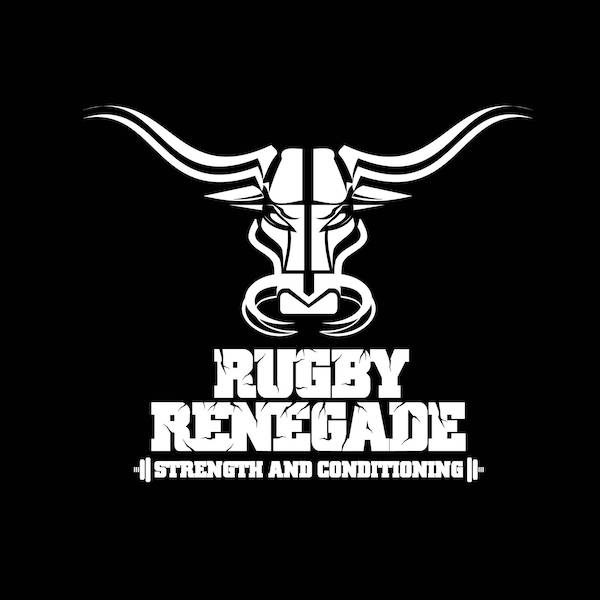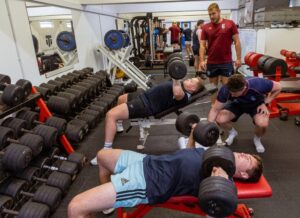Speed on the field can turn good players in to exceptional. And, whether it is in a straight line, or in close quarters, the skills to move, accelerate, decelerate and evade, are often what can set you apart from your opposite number.
We believe that every rugby player can get faster!
As you look through this article you will see that we have linked to a number of other useful resources for you to take a more in-depth look at a number of the topics we introduce.

Speed of Thought, Before Speed of Feet
We have all seen or played with those players who have an innate ability to always look like they have all the time in the world. Both in attack and defence. It is often the case that these players may not be the fastest in the squad but it is their speed of thought and reading of the game that gives them the edge.
There is little value in getting faster if all it means is that you get out of position quicker than you did before!
Lets take a look at some of the physical characteristics that make fast rugby players. All of them are valuable and they are often pooled together when we think about “fast” players!
There are some universal characteristics that fast players all have
Speed
When we discuss “speed” in this article we are talking about maximal straight line speed. The quality you need in the open field after an interception for example
Acceleration
How quickly you can move through the gears from a standing, ground based or slow moving start to reach your top speed
Deceleration
How quickly can a player slow down from moving at high or top speeds to a slower speed or even to a dead stop. The ability to decelerate quickly can be just as effective in creating space as top end speed and acceleration.
Agility
By definition: A skill-related component of physical fitness that relates to the ability to rapidly change the position of the entire body in space with speed and accuracy. Agility is about knowing when to use all three movement qualities and reacting to what is happening around the athlete on the field.
Move Fast to Get Fast
One of the easiest ways to get faster is to do things quickly, move fast! If you want to get quicker in a straight line, do linear sprints. If you want to get better at accelerating – do more acceleration work. It sounds simple yet we still see it all of the time, players not having the right specificity in their training for their desired training goals!
Linear Speed
Sprinting should be planned in to your training throughout the season. It has a number of benefits not least reducing the incidence of soft tissue injuries. Sprinting is actually protective and should not be avoided. Just well planned!
Here are 5 Top Tips to get Faster
Acceleration, Deceleration and Agility
It is equally important to plan Acceleration, Deceleration and Agility drills into your training. These could be in the form of strict technical drills at the end of a warm up or integrated into small sided games or technical drills. If you have access to GPS you will be able to track the number and magnitude of your accelerations and decelerations. If not, then ensure you create opportunities during your training sessions to put the hammer down and to hit the breaks!
One of the most effective ways to train acceleration is using sled drags and resisted accelerations. One of the most powerful and potent training modalities to develop speed off the mark!
Another commonly used tool is hill sprints. Ideal for the lack of equipment needed and the ability to target different areas of speed and fitness depending on the incline and length of the hill combined with the recovery between each effort and the volume of the session. Take a look at these example hill sprint sessions and give them a go!
However you program your speed drills in to your training, ensure that you make sure that you are really speed training to get the most from your training. When it comes to speed training it is easy to get the balance wrong and fall in to conditioning based drills. Speed is about quality over quantity and should be performed when your legs are fresh enough to create the high forces required!
Repeat Sprint Ability
Having the ability to perform one off sprints is a gift for a 100m sprinter, but as we know, rugby is a game of 80 minutes with a requirement to produce a high number of maximal efforts during the game. Really effective players on the field can demonstrate speed of mind and speed of feet over and over again throughout a match. Theres nothing more dangerous than fast players running at players that are more tired than they are!
Phase one of developing the ability to produce multiple maximal efforts with minimal recovery is to build an aerobic base.
One of the best ways to build a robust aerobic base is through maximal aerobic speed training, a training technique built on training at individual thresholds.
Once a player has deep aerobic reserve, the ability to perform repeated sprints can be developed.
We have written a detailed article on Repeat Sprint Ability for you to take a closer look at this crucial area of speed training.




